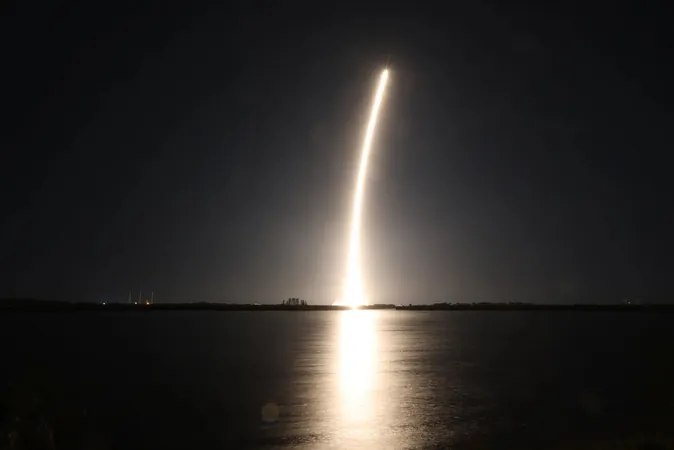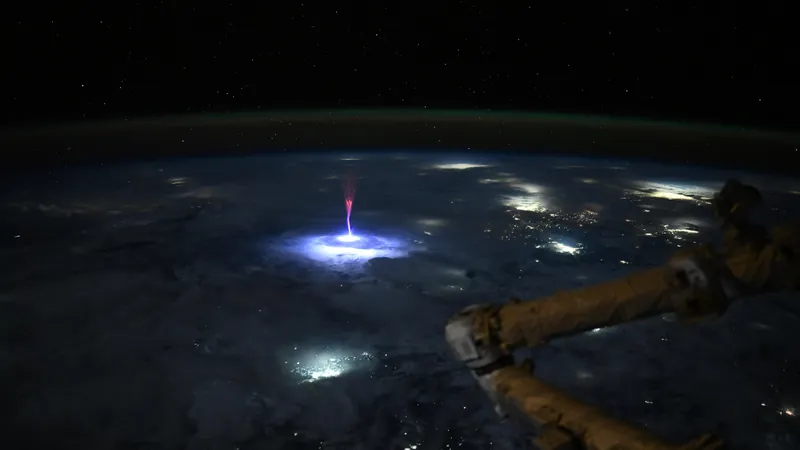
A New Era of Lunar Exploration: SpaceX Launches Two Landers toward the Moon!
2025-01-22
Author: Jia
In the 1960s and 1970s, the Moon was humanity's focal point, culminating in the historic Apollo missions that first took astronauts to our celestial neighbor. Fast forward over 50 years, and the race to the Moon is reigniting, with new technologies and ambitions propelling us back. The recent launch of the SpaceX Falcon 9 rocket marks a significant milestone in this new era of exploration, carrying two landers: NASA’s Blue Ghost Mission 1 and the Japanese HAKUTO-R.
The Blue Ghost, a part of NASA’s Commercial Lunar Payload Services (CLPS), is on an ambitious mission to conduct groundbreaking research on the Moon. It carries 10 NASA payloads designed to deepen our understanding of lunar geology and enhance our future explorations. This mission is particularly exciting, as it aligns with the goals of NASA’s Artemis program, which aims to establish a sustainable human presence on the Moon. With international players like China and India also advancing their lunar objectives, the Moon has never been more popular in the realm of space exploration.
This launch is noteworthy not just for its payloads but also for the technology behind it. SpaceX’s Falcon 9 is a reusable rocket, designed to make space travel more cost-effective. Since its first flight in 2010, it has achieved nearly 200 successful launches, setting the stage for new possibilities in space missions.
The Blue Ghost lander is set to land near Mons Latreille within Mare Crisium on March 2, 2025. According to NASA Deputy Administrator Pam Melroy, “The mission embodies the bold spirit of NASA’s Artemis campaign – a campaign driven by scientific exploration and discovery.” Upon reaching the lunar surface, it will demonstrate advanced technologies such as drilling capabilities, lunar regolith collection, and radiation-hardened computing. This mission is pivotal, as it lays the groundwork for potential human visits and the development of a permanent base on the Moon.
One of the exciting aspects of this mission is the range of ten sophisticated payloads it carries, including innovative technologies such as the Lunar Instrumentation for Subsurface Thermal Exploration and Radiation Tolerant Computer. These instruments represent the cutting-edge advancements designed to tackle the challenges of lunar exploration.
In a remarkable display of international collaboration, the HAKUTO-R M2 Resilience lander is also en route to the Moon, taking a more fuel-efficient trajectory to reach Mare Frigoris in approximately four months. On arrival, it will deploy the Tenacious rover, tasked with collecting and analyzing lunar regolith samples. Under a contract signed with NASA in 2020, these valuable samples will be sold back for $5,000 USD, showcasing a unique partnership between private enterprise and government space agencies.
As we embark on this new chapter of lunar exploration, the possibilities are endless, and the dream of a human presence on the Moon is closer to reality than ever. Stay tuned as this exciting story unfolds!



 Brasil (PT)
Brasil (PT)
 Canada (EN)
Canada (EN)
 Chile (ES)
Chile (ES)
 Česko (CS)
Česko (CS)
 대한민국 (KO)
대한민국 (KO)
 España (ES)
España (ES)
 France (FR)
France (FR)
 Hong Kong (EN)
Hong Kong (EN)
 Italia (IT)
Italia (IT)
 日本 (JA)
日本 (JA)
 Magyarország (HU)
Magyarország (HU)
 Norge (NO)
Norge (NO)
 Polska (PL)
Polska (PL)
 Schweiz (DE)
Schweiz (DE)
 Singapore (EN)
Singapore (EN)
 Sverige (SV)
Sverige (SV)
 Suomi (FI)
Suomi (FI)
 Türkiye (TR)
Türkiye (TR)
 الإمارات العربية المتحدة (AR)
الإمارات العربية المتحدة (AR)